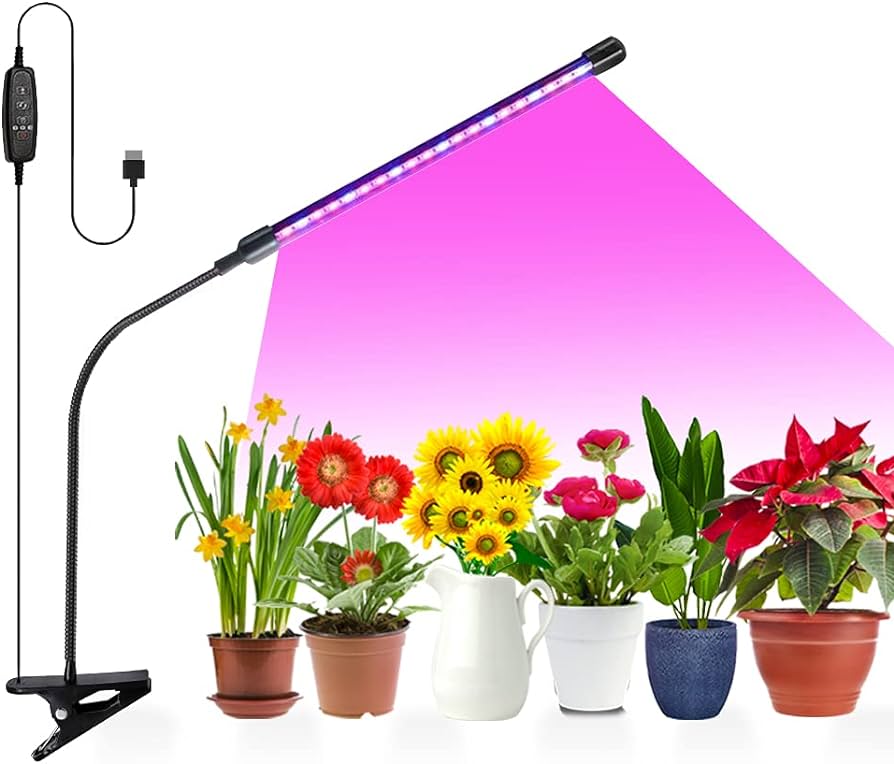
Maximizing Indoor Gardening Success with LED Grow Lights
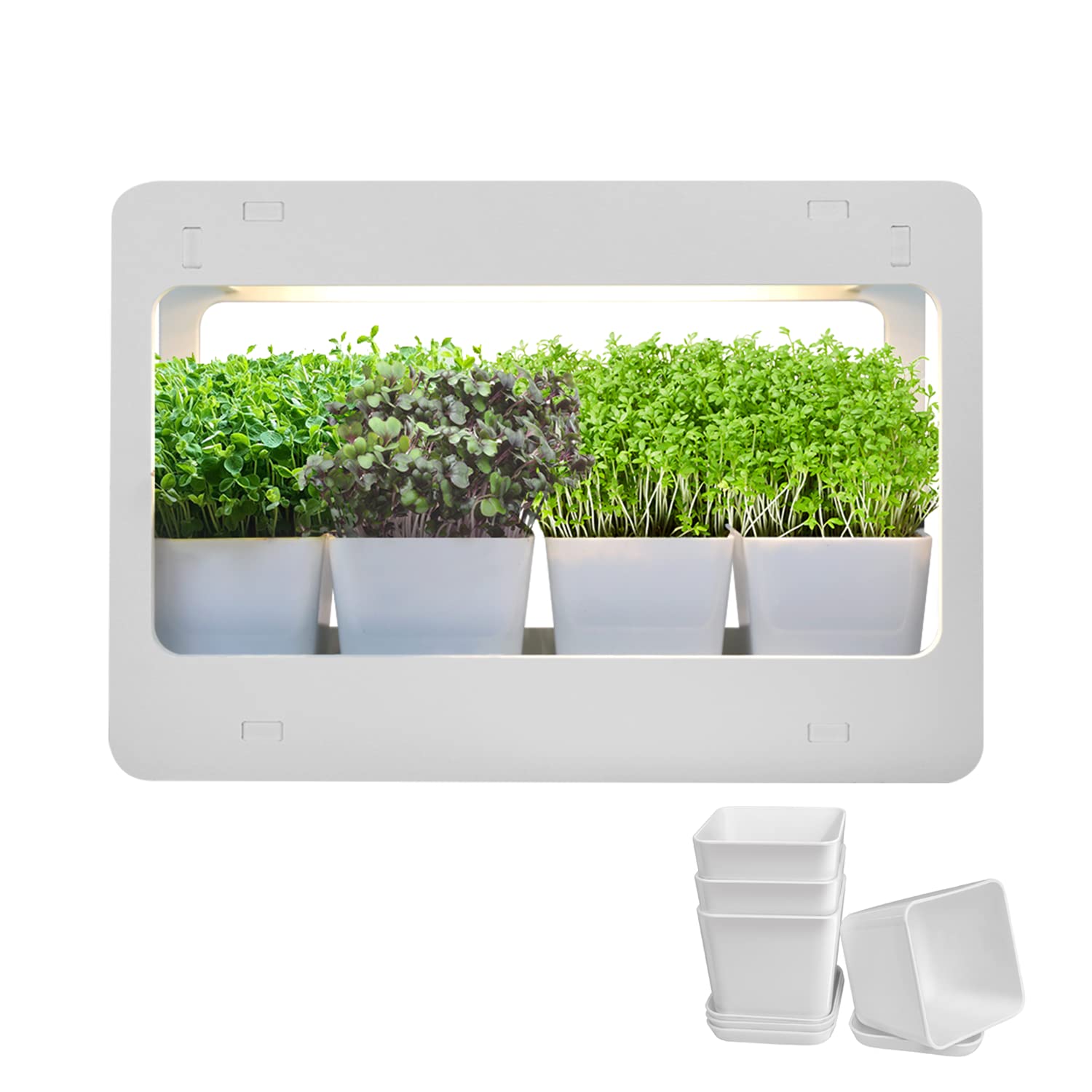
In the captivating realm of horticulture, indoor gardening has emerged as a flourishing pursuit, transforming homes and apartments into verdant oases. While sunlight remains the primary source of energy for plant growth, advancements in LED technology have revolutionized the indoor gardening landscape, providing a viable and versatile alternative to natural light. Whether you’re a seasoned green thumb or a budding plant enthusiast, understanding the intricacies of indoor gardening with LED grow lights is essential for cultivating a thriving indoor garden.
I. Introduction
A. The Allure of Indoor Gardening
Indoor gardening has captivated individuals worldwide, offering the opportunity to nurture plants and create a verdant haven within their living spaces. This trend is fueled by the desire to connect with nature, enhance air quality, and enjoy the therapeutic benefits of gardening. Indoor gardens provide a sense of tranquility and well-being, transforming homes into vibrant sanctuaries.
B. LED Grow Lights: A Revolutionary Transformation
LED grow lights have revolutionized indoor gardening by providing an energy-efficient, versatile, and spectrum-controllable alternative to traditional fluorescent or incandescent grow lights. These lights emit specific wavelengths of light that can be tailored to the unique needs of different plant species, enabling precise control over plant growth and development. Unlike traditional grow lights, LED lights are energy-efficient, producing minimal heat and extending their lifespan.
C. Selecting the Ideal LED Grow Light
When choosing an LED grow light for your indoor garden, several factors should be carefully considered. The light’s spectrum, intensity, coverage area, and energy efficiency are crucial aspects to evaluate. Additionally, the light’s mounting options, durability, and compatibility with your specific growing setup should be taken into account.
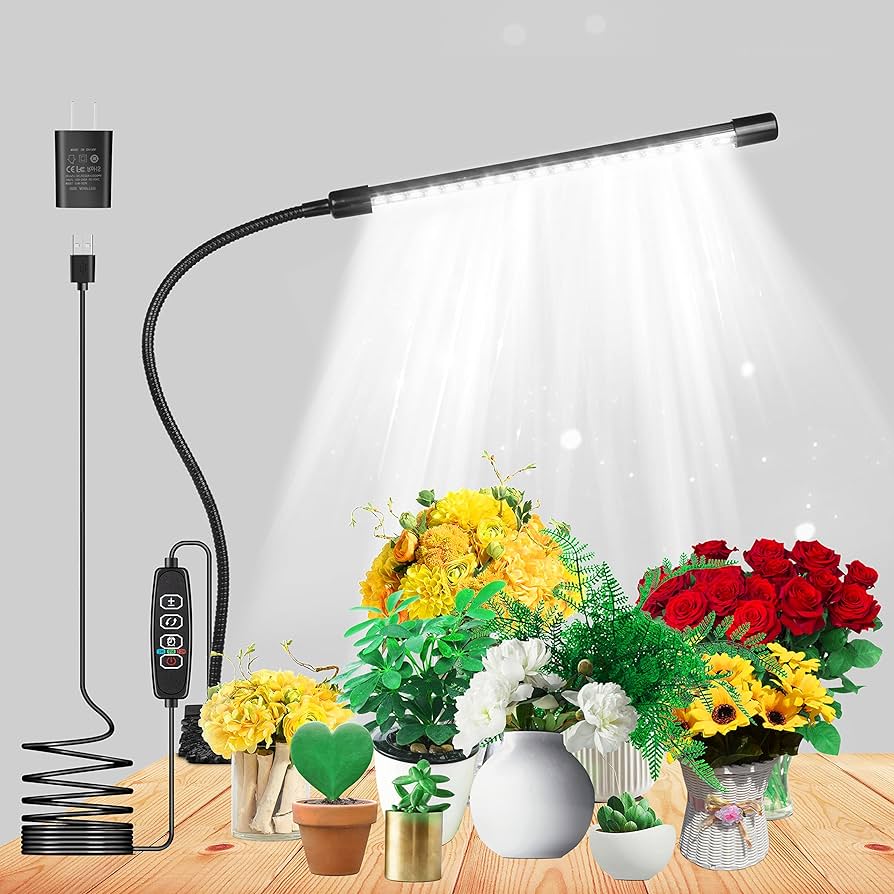
II. Types of LED Grow Lights for Indoor Gardening
A. Single-Color LED Grow Lights: Targeted Illumination
Single-color LED grow lights emit specific wavelengths of light, such as blue or red, which are particularly beneficial for certain stages of plant growth. Blue light promotes vegetative growth, stimulating the development of leaves and stems. Red light encourages flowering and fruiting, triggering the production of blossoms and fruits.
B. Full-Spectrum LED Grow Lights: Mimicking Natural Sunlight
Full-spectrum LED grow lights emit a blend of wavelengths that mimic natural sunlight, providing a comprehensive light source for overall plant health and development. These lights are well-suited for a wide range of plant species, from leafy greens to flowering plants. Their comprehensive spectrum ensures that plants receive all the essential wavelengths they need for optimal growth.
C. Hybrid LED Grow Lights: Tailored Illumination
Hybrid LED grow lights combine single-color and full-spectrum LEDs, offering the flexibility to tailor the light spectrum to specific plant needs. This allows for more precise control over plant growth and development. For instance, you can use a hybrid light with a higher proportion of blue light during the vegetative stage and then switch to a light with more red light during the flowering stage.
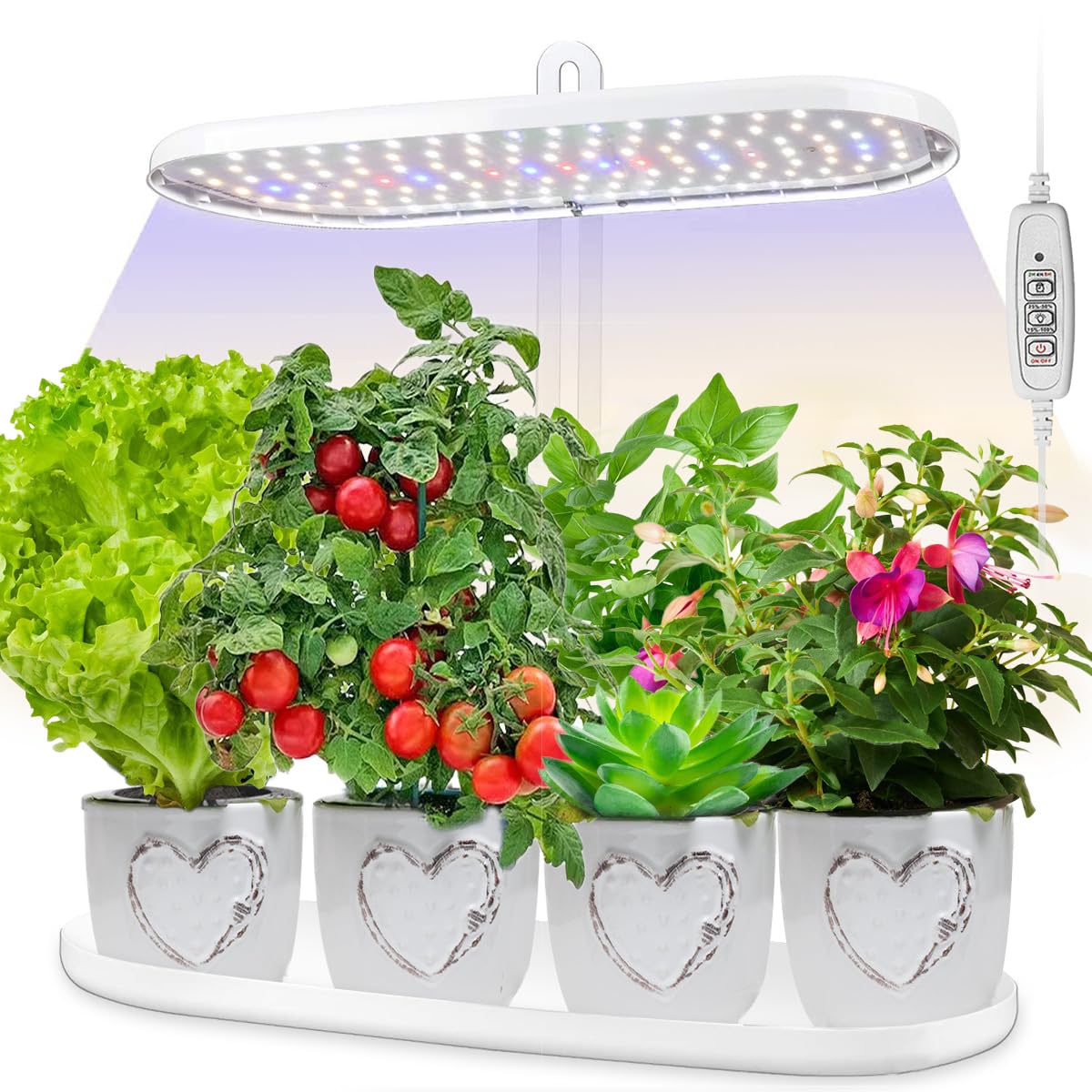
III. Establishing Your Indoor Garden with LED Grow Lights
A. Selecting the Right Location: Setting the Stage
Choose a location for your indoor garden that receives adequate ventilation and has access to a power outlet. Consider factors like temperature, humidity, and exposure to natural light. Ideally, select a spot that receives some indirect sunlight to supplement the artificial light from your LED grow lights.
B. Choosing Suitable Containers and Growing Medium: Nurturing Roots
Select containers with drainage holes and a size appropriate for the plants you intend to grow. Ensure the containers are deep enough to accommodate the root systems of your plants. Choose a well-draining, aerated growing medium, such as potting mix or coco coir. These media provide the necessary support and aeration for root growth.
C. Planting and Transplanting: Giving Life to Seeds and Seedlings
Follow the recommended planting depth and spacing for your chosen seeds or seedlings. Ensure the growing medium is moist but not soggy. Water the seeds or seedlings gently after planting to settle the soil and provide initial moisture. For seedlings, carefully remove them from their original containers and gently transplant them into the prepared pots.
D. Positioning Your LED Grow Lights: Ensuring Optimal Lighting
Suspend your LED grow lights at an appropriate height above the plants, ensuring even light distribution. Adjust the height as the plants grow. The ideal distance between the lights and the plants depends on the specific light intensity and the plant species. As a general rule, start with a distance of a few inches and adjust as needed.
E. Establishing an Appropriate Lighting Schedule: Mimicking Day and Night
Provide your plants with the optimal amount of light based on their species and growth stage. Most plants require 12-18 hours of light per day. Use a timer to automate the lighting schedule, ensuring consistent light cycles for your plants. Adjust the lighting duration based on the specific needs of your plants.
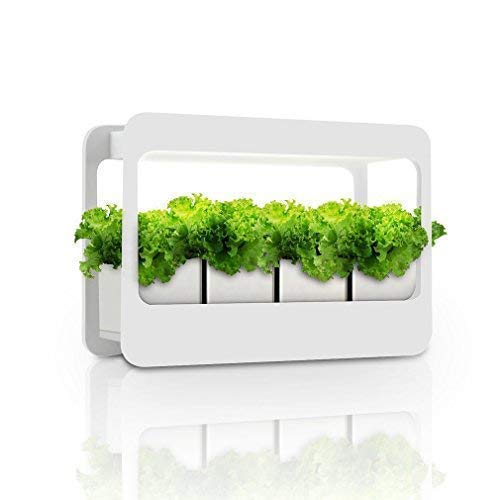
IV. Maintaining an Indoor Garden with LED Grow Lights
A. Regular Watering: Finding the Balance
Water your plants thoroughly when the top inch of soil feels dry to the touch. Avoid overwatering, which can lead to root rot. Overwatering deprives roots of oxygen, hindering their ability to absorb water and nutrients. When watering, ensure the water drains freely from the drainage holes to prevent waterlogging.
B. Monitoring Nutrient Levels: Feeding Your Plants
Use a balanced liquid fertilizer as needed to provide essential nutrients for healthy plant growth. Follow the recommended dilution rates and application frequency on the fertilizer packaging. Over-fertilizing can damage plant roots and harm the soil. Signs of nutrient deficiency include stunted growth, yellowing leaves, and poor flowering or fruiting.
C. Controlling Temperature and Humidity: Creating a Favorable Environment
Maintain an ideal temperature range for your plants, typically between 65-80°F (18-27°C). Most houseplants thrive within this range. Monitor the temperature using a thermometer and adjust room temperature or ventilation as needed. Aim for humidity levels around 50-60%. Grouping plants together or using a humidifier can help increase humidity levels if necessary.
D. Pruning and Pest Control: Maintaining Plant Health
Regularly prune your plants to encourage healthy growth, improve air circulation, and promote a bushier appearance. Remove any diseased or damaged leaves to prevent the spread of disease. Monitor for pests such as aphids, mealybugs, or spider mites. If pests are present, isolate affected plants and use organic pest control methods whenever possible.

V. Troubleshooting Common Indoor Gardening Problems with LED Grow Lights
A. Stretched or Leggy Plants: A Lighting Issue
Stretched or leggy plants with elongated stems and sparse foliage may indicate insufficient light intensity or improper light positioning. Adjust the light height closer to the plants or increase the light intensity to provide adequate light for healthy growth. Ensure even light distribution across the plant canopy.
B. Yellowing Leaves: Identifying the Cause
Yellowing leaves can be caused by various factors, such as overwatering, nutrient deficiencies, or root rot. Assess your watering practices and adjust if necessary. Check for signs of root rot, such as mushy or discolored roots. If root rot is present, repot the plant in fresh potting mix and adjust your watering habits. Consider using a balanced fertilizer to address nutrient deficiencies.
C. Drooping or Wilting Plants: Addressing Underlying Issues
Drooping or wilting plants may indicate underwatering, excessive heat, or root issues. Check the soil moisture and water thoroughly if the top inch of soil feels dry. Adjust the room temperature or ventilation if the temperature is excessively high. Inspect the roots for signs of root rot and repot the plant if necessary.
D. Slow Growth or Lack of Flowering: Potential Causes
Slow growth or lack of flowering can be attributed to several factors, including insufficient light, nutrient deficiencies, or incorrect temperature and humidity levels. Ensure your lighting schedule and intensity are appropriate for the plant species. Address any nutrient deficiencies with balanced fertilization. Maintain the ideal temperature and humidity range for your plants.
VI. Conclusion: Cultivating a Thriving Indoor Oasis
By understanding the intricacies of indoor gardening with LED grow lights, you can cultivate a flourishing indoor oasis, brimming with vibrant plant life. From selecting the ideal LED grow light to maintaining proper watering and fertilization practices, this guide equips you with the knowledge to nurture a thriving indoor garden. As you witness your plants flourish under the gentle glow of LED lights, you’ll experience the joy of indoor gardening and the satisfaction of cultivating a verdant sanctuary within your own home.